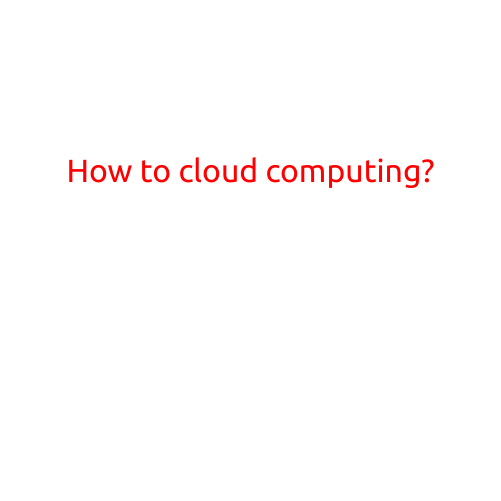
How to Cloud Computing?
In today’s digital age, cloud computing has become a necessity for businesses and individuals alike. With the increasing demand for data storage, processing, and sharing, the concept of cloud computing has revolutionized the way we access and manage our digital assets. But what exactly is cloud computing, and how can you use it to improve your daily life and business operations?
What is Cloud Computing?
Cloud computing is a model of delivering computing services over the internet, where resources such as servers, storage, databases, software, and applications are provided as a service to users on-demand. Instead of having to manage and maintain physical hardware and software, users can access these resources on a pay-as-you-go basis, allowing for greater flexibility, scalability, and cost savings.
Key Components of Cloud Computing
There are three main components of cloud computing:
- Infrastructure as a Service (IaaS): This provides users with virtualized computing resources, such as servers, storage, and networking, which can be managed and configured by the user.
- Platform as a Service (PaaS): This provides users with a complete development and deployment environment for building, testing, and running applications, including tools, libraries, and infrastructure.
- Software as a Service (SaaS): This provides users with ready-to-use software applications, such as Microsoft Office or Google Drive, which are accessed through a web browser or mobile app.
How to Use Cloud Computing
To get started with cloud computing, follow these steps:
- Choose a Cloud Provider: Select a reputable cloud provider such as Amazon Web Services (AWS), Microsoft Azure, Google Cloud Platform (GCP), or IBM Cloud.
- Sign up for an Account: Create an account with the chosen cloud provider, providing necessary information such as name, email, and password.
- Choose the Right Plan: Select a plan that meets your needs, taking into account factors such as storage, processing power, and network bandwidth.
- Set up your Cloud Environment: Configure your cloud environment, including setting up virtual machines, databases, and storage.
- Deploy Your Applications: Deploy your applications, such as a website or software, to the cloud environment.
- Monitor and Manage: Monitor your cloud resources and manage your application performance using built-in tools or third-party software.
Benefits of Cloud Computing
Cloud computing offers numerous benefits, including:
- Scalability: Scale your resources up or down as needed, without having to invest in new hardware or software.
- Flexibility: Access your applications and data from anywhere, at any time, using any device with an internet connection.
- Cost Savings: Pay only for the resources you use, reducing capital and operational expenses.
- Reliability: Cloud providers typically offer high levels of uptime and redundancy, minimizing the risk of data loss or downtime.
- Security: Cloud providers invest heavily in security, with robust measures in place to protect your data and applications.
Conclusion
In conclusion, cloud computing is a powerful and flexible solution for businesses and individuals alike. By understanding the key components of cloud computing and how to use it, you can take advantage of its many benefits and transform the way you access and manage your digital assets.





